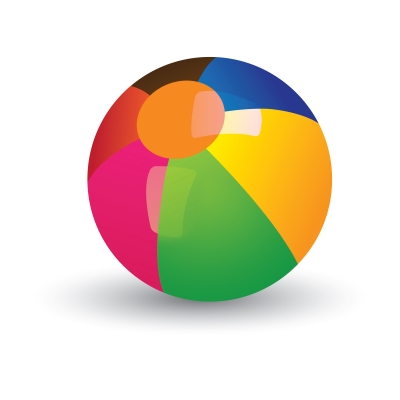This is a summary of the work that we presented at Health Has Got Talent 2015.
One of the challenges of teaching therapy skills to speech and language therapy students is considering how to incorporate practical work into the lecture environment, especially with very large groups of students with different levels of experience. This is especially true when teaching voice therapy skills. Speech and language therapists offer voice therapy to clients who have experienced a change in their voice, for example, teachers with vocal nodules or people who have damage to their larynx following surgery. Voice therapy involves using the voice in many different way – loud, quiet, high, low and sometimes a combination of all of these! Some of the therapy techniques that we use are very similar to singing exercises and understandably many people finding ‘singing’ quite embarrassing and nerve-racking, especially if they are asked to practise in front of peers in a fairly large group.
We were keen to inject as much practical work into our voice lectures as possible. Voice therapy is a relatively small area of speech and language therapy and many students will not have the opportunity to practice therapy techniques during clinical placements, so it was important for us to find ways of incorporating this experience into our lectures. We identified a number of challenges associated with this task and went about using evidence-informed teaching strategies to overcome these challenges.
Challenge 1 – Voice disorders and voice therapy are relatively complex and abstract topics, which require the development of specific clinical skills, but these skills are not frequently used in practice. We addressed this by:
- Setting up lectures to be almost entirely focused on the development of practical skills.
- Drawing on principles of complexity theory (Cooper & Geyer, 2008):
- Explicitly directing students to other areas of the curriculum where relevant theory had been covered and encouraging them to take responsibility for reviewing this theory in preparation for lectures, rather than reviewing it again in the lecture setting. We have since moved this on by introducing Moodle quizzes to assist the students in their preparation for more practical lecture sessions.
- Using lots of video and audio examples and ‘real life’ clinical assessment tools to encourage interactive learning and provide opportunities for ‘teaching in the moment’.
- Drawing on principles that underpin effective experiential learning (McLaughlin, 2012):
- Encouraging open and honest reflection about the fact that voice work can be embarrassing and strongly linking this to what our patients experience when they commence voice therapy.
- Lecturers taking on more of a ‘facilitator’ rather than ‘teacher’ role, as well as identifying students who felt comfortable with voice therapy technique who were willing to act as models for their peers.
- Using a problem-based learning approach (Mannix & McIntosh, 2011), where voice therapy skills were developed and practised in the context of ‘real life’ case studies, enhancing clinical relevance as much as possible. This also allowed for underpinning theory, such as anatomy and physiology, to be reviewed in a more clinically relevant and applied way.
Challenge 2 – We were teaching a large (120 students) and varied group (mix of postgraduate and undergraduate students). We were aware that the nature of the group could result in an environment that may not support the practical focus that we were aiming for. We addressed this by:
- Building in opportunities for the two cohorts to ‘mix’ from the very start of the module. We encouraged the students to identify their individual strengths and challenges and discuss their perceptions of each other’s knowledge and experience as a way of ‘levelling the playing field’.
- We did our best to create a safe learning environment, where everyone’s contributions were acknowledged and valued. This can be a challenging task for a lecturer, requiring quick thinking skills especially where a contribution might be a bit left-field and in need of some adapting!
- We divided the group into ‘quadrants’ to encourage a ‘team’ atmosphere and ensure that we were inviting contributions from the entire group.
- We used a beach ball, thrown from student-to-student to encourage contributions. Students were free to pass the beach ball on if they didn’t want to speak up.
- We used Poll Everywhere as a method for quick knowledge recaps during the lectures.
Image courtesy of smarnad at FreeDigitalPhotos.net
The students were very enthusiastic about the sessions and we received some very positive feedback, including:
- “It’s great looking at real life case studies and thinking about diagnosis, assessment and therapy – it feels like we are doing the job!”
- “Real life examples from clinics make lectures more engaging.”
- “Videos of real life people and structures in the body make it easier to understand what is being taught.”
Overall, we found that taking a theoretical approach to a fairly practical challenge resulted in rewarding teaching experiences for us and rich learning opportunities for our students.
Useful resources:
Cooper, H. and Geyer, R. (2008), Using “complexity” for improving educational research in health care. Social Science and Medicine, 67, 177–82.
Mannix, J., & McIntosh, A. (2011). Problem-based learning. In McIntosh, A., Gidman, J., & Mason-Whitehead, E (Eds.). Key concepts in healthcare education. Sage Publications.
McLaughlin, A. (2011). Experiential and work-based learning. In McIntosh, A., Gidman, J., & Mason-Whitehead, E (Eds.). Key concepts in healthcare education. Sage Publications.
Emma Fitzpatrick and Ioanna Georgiadou


